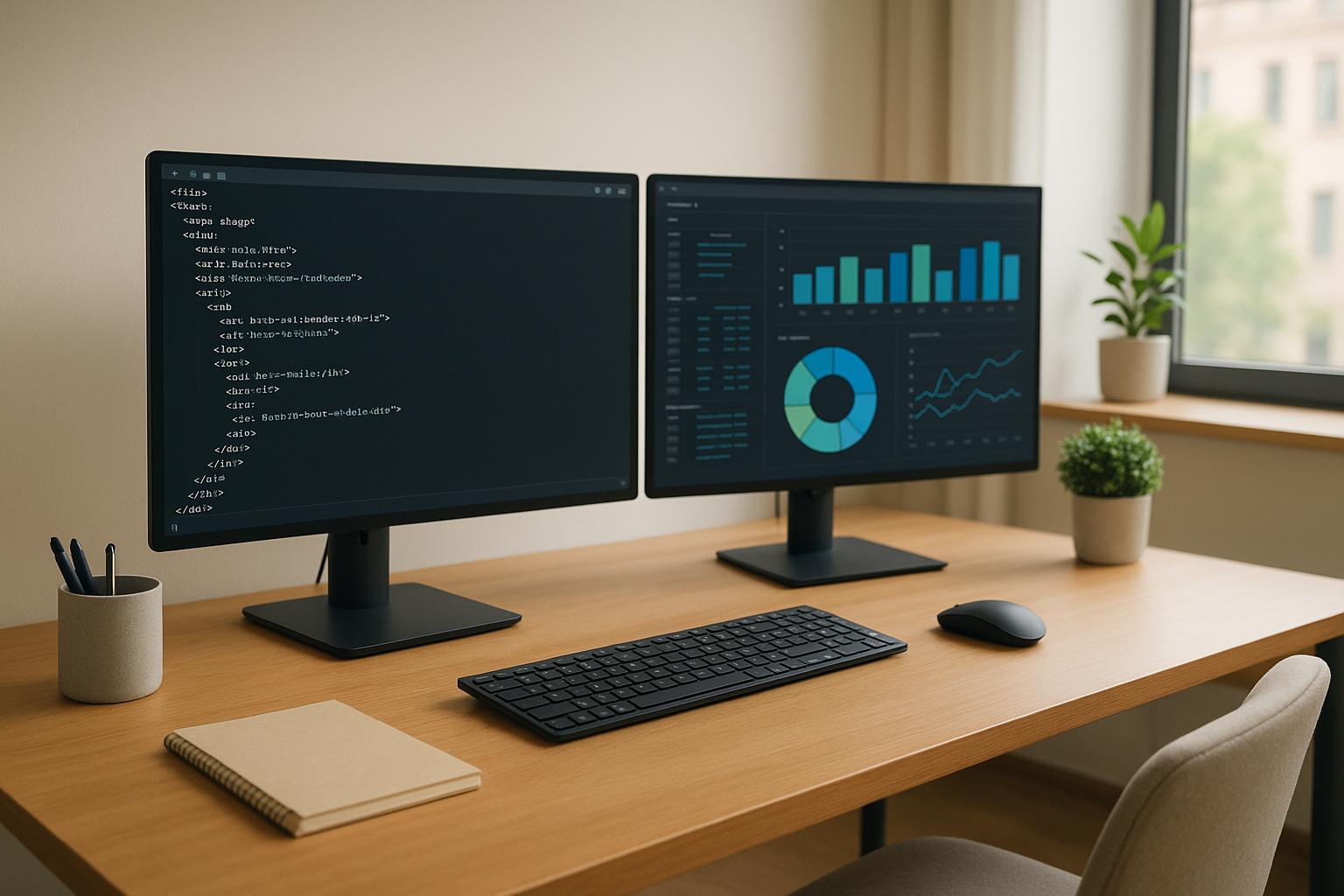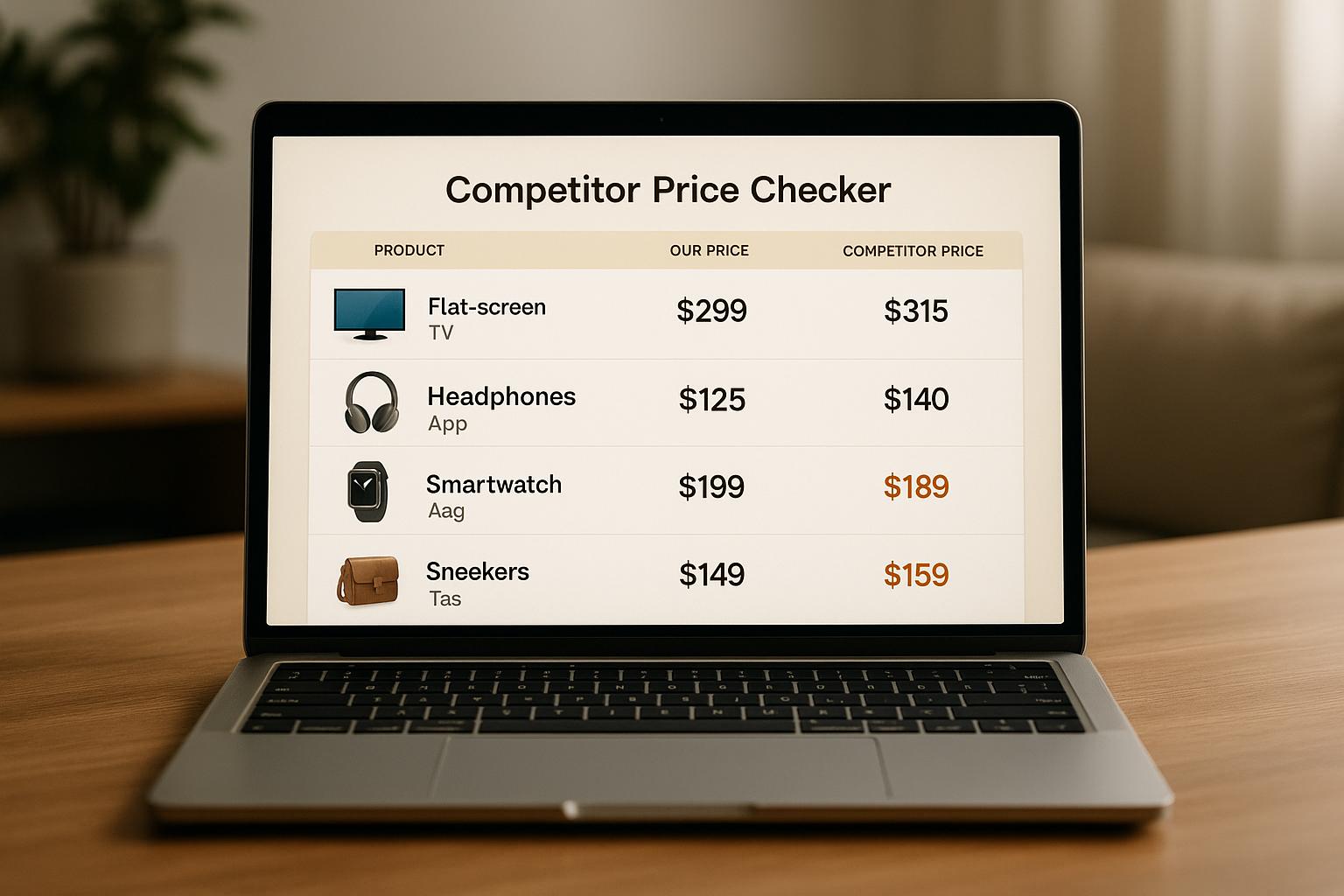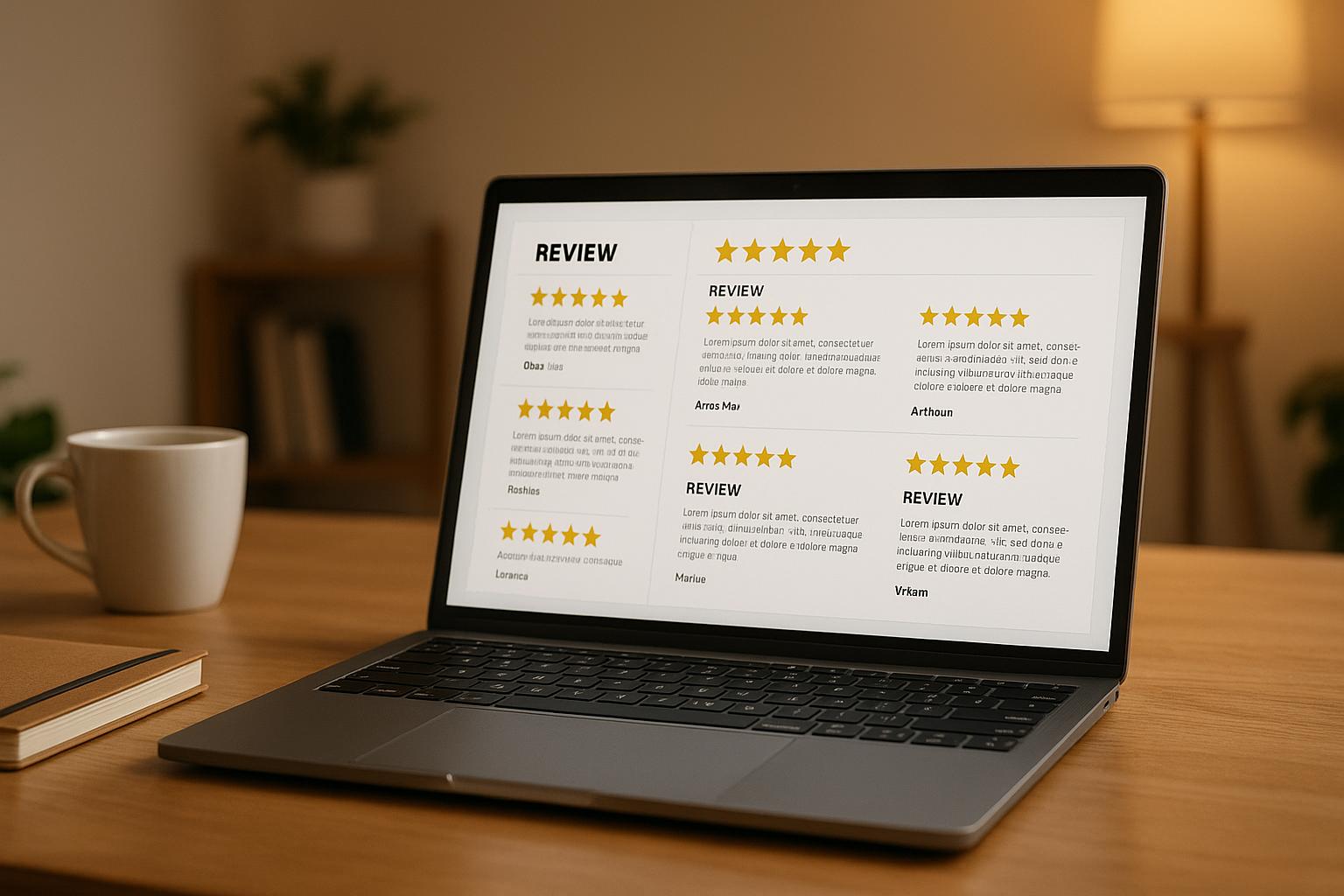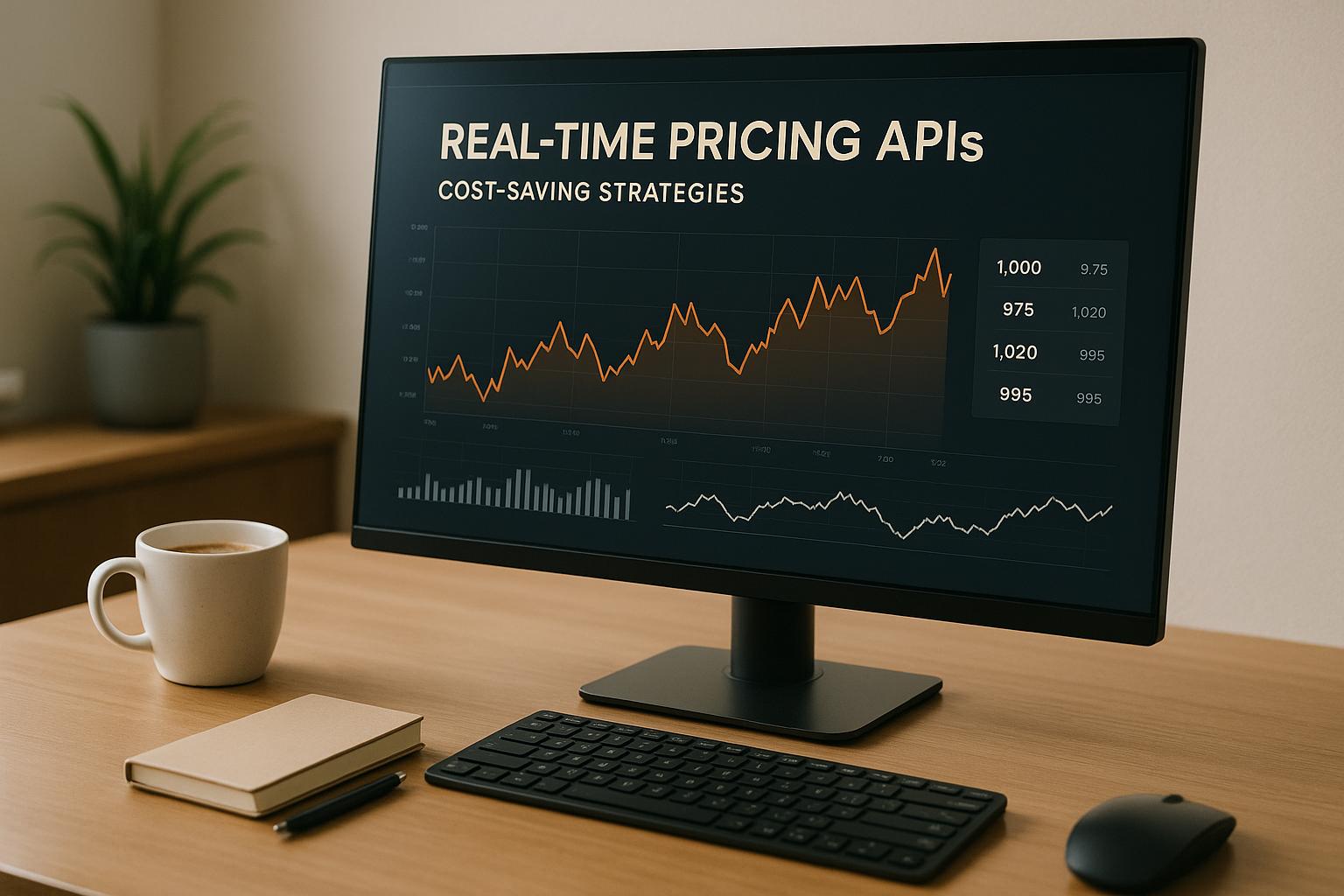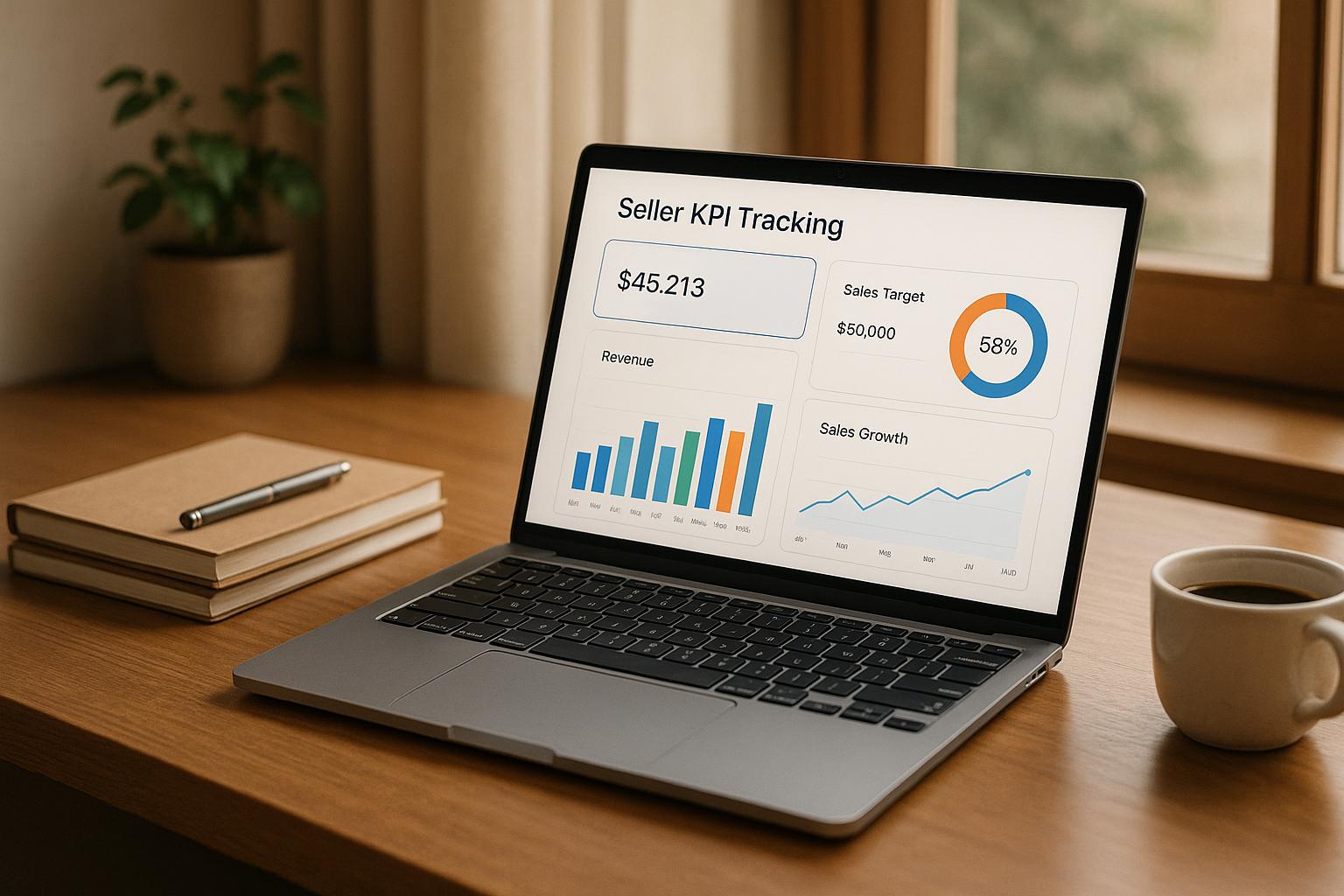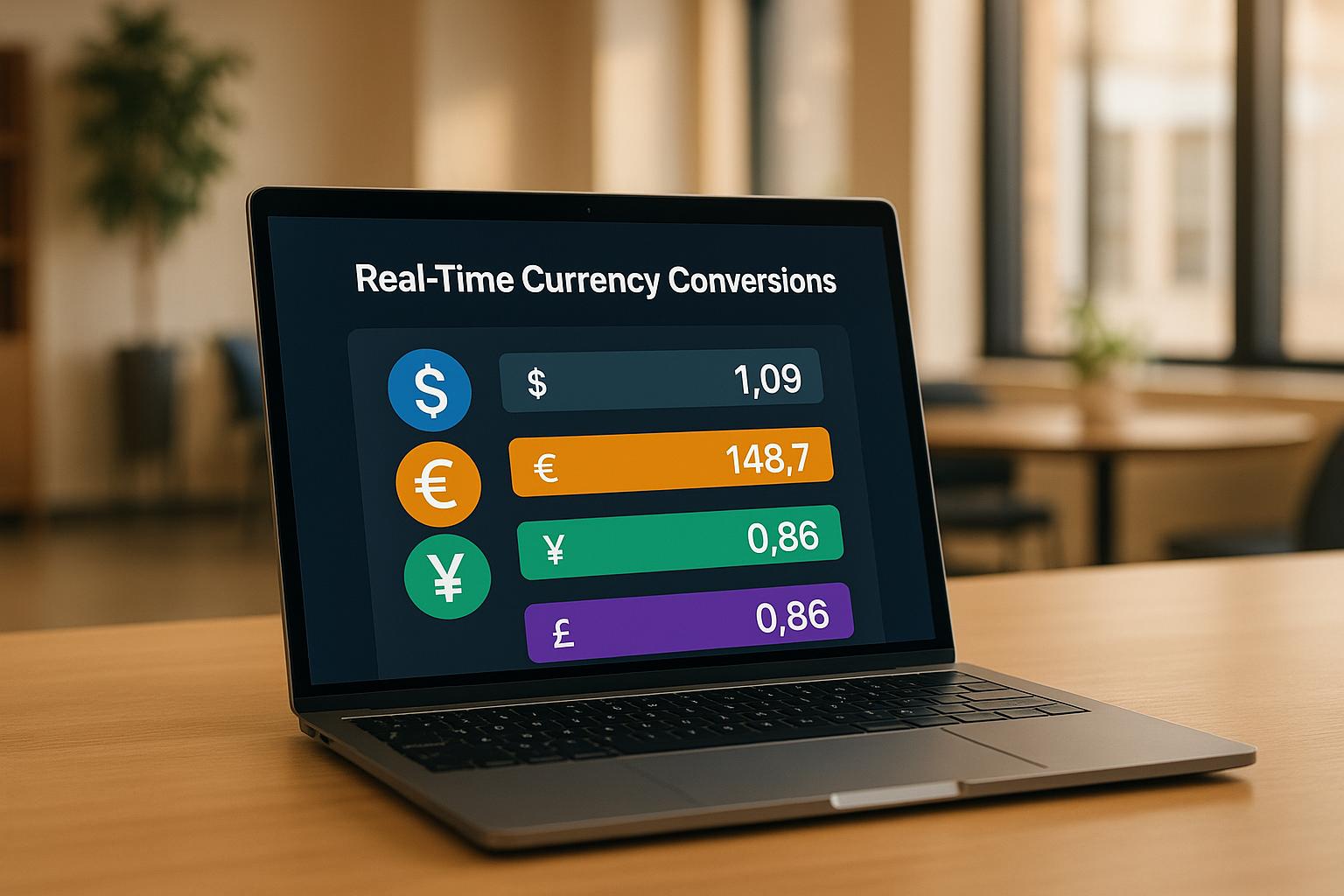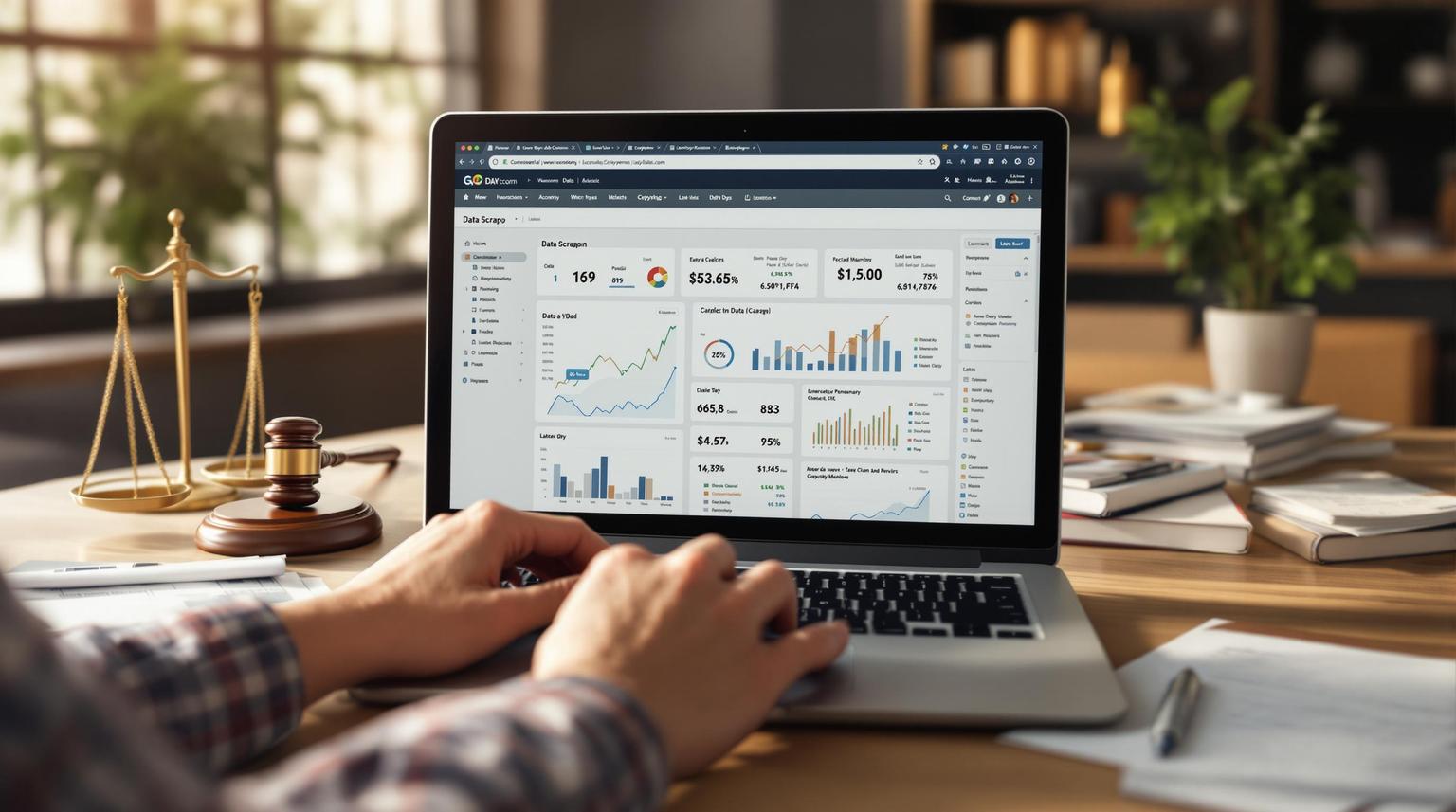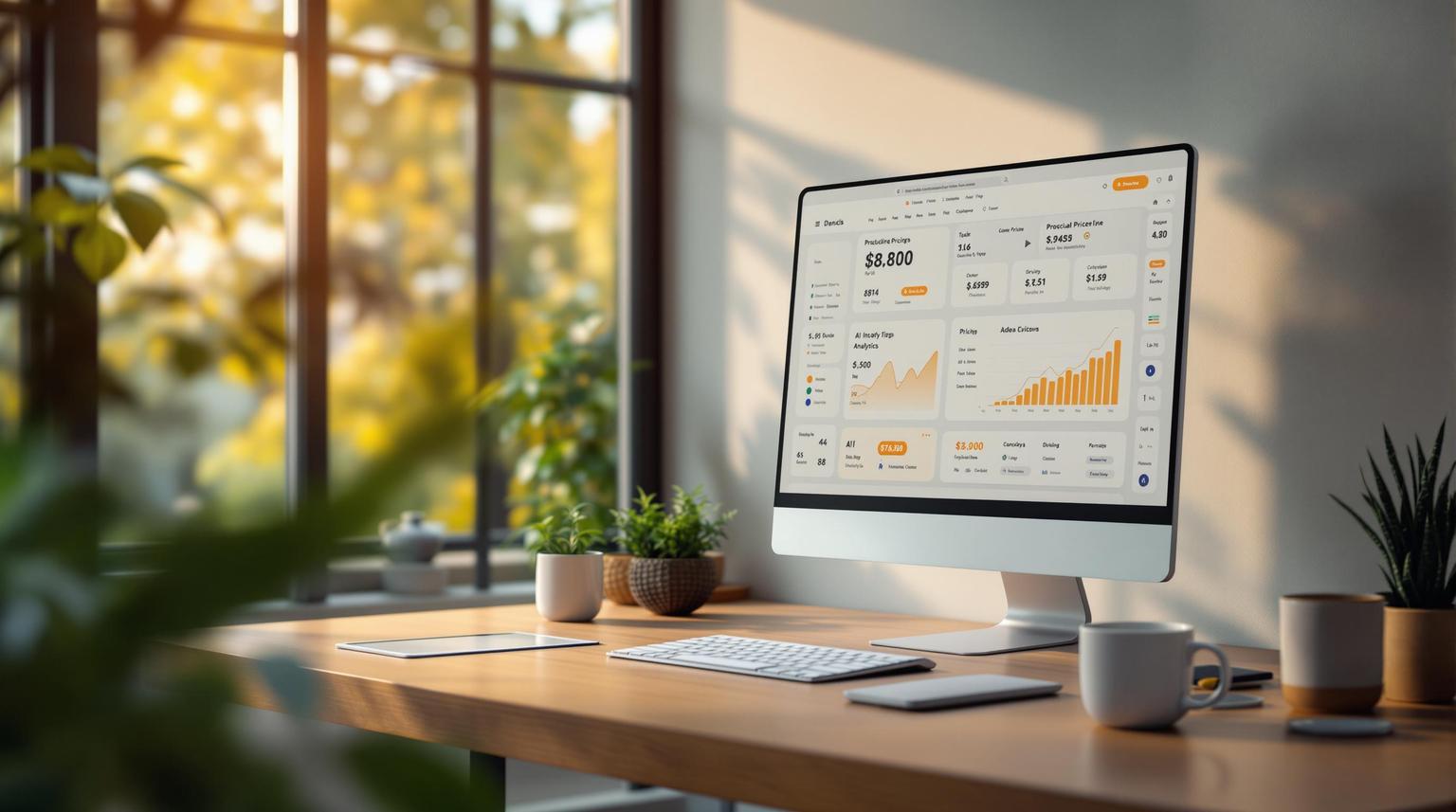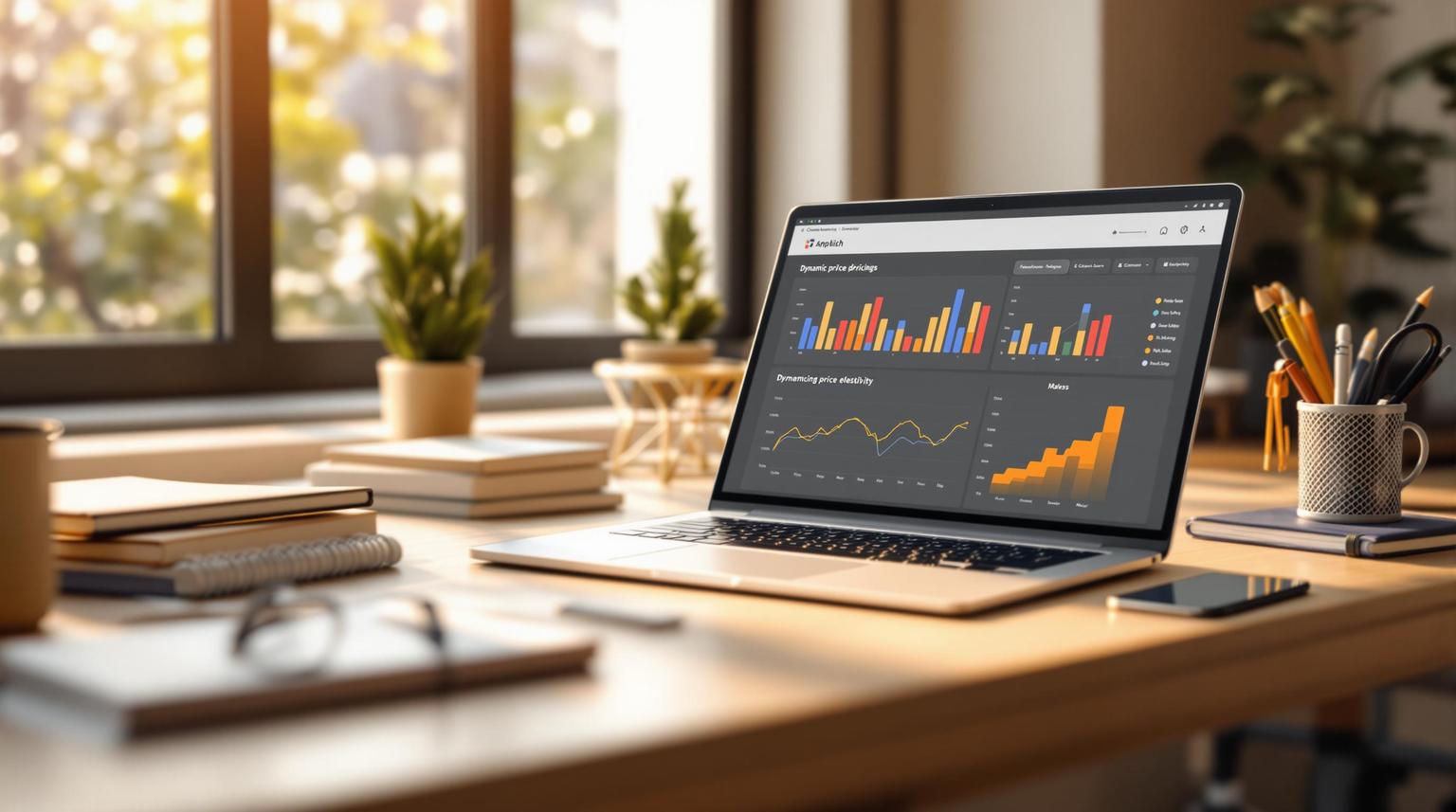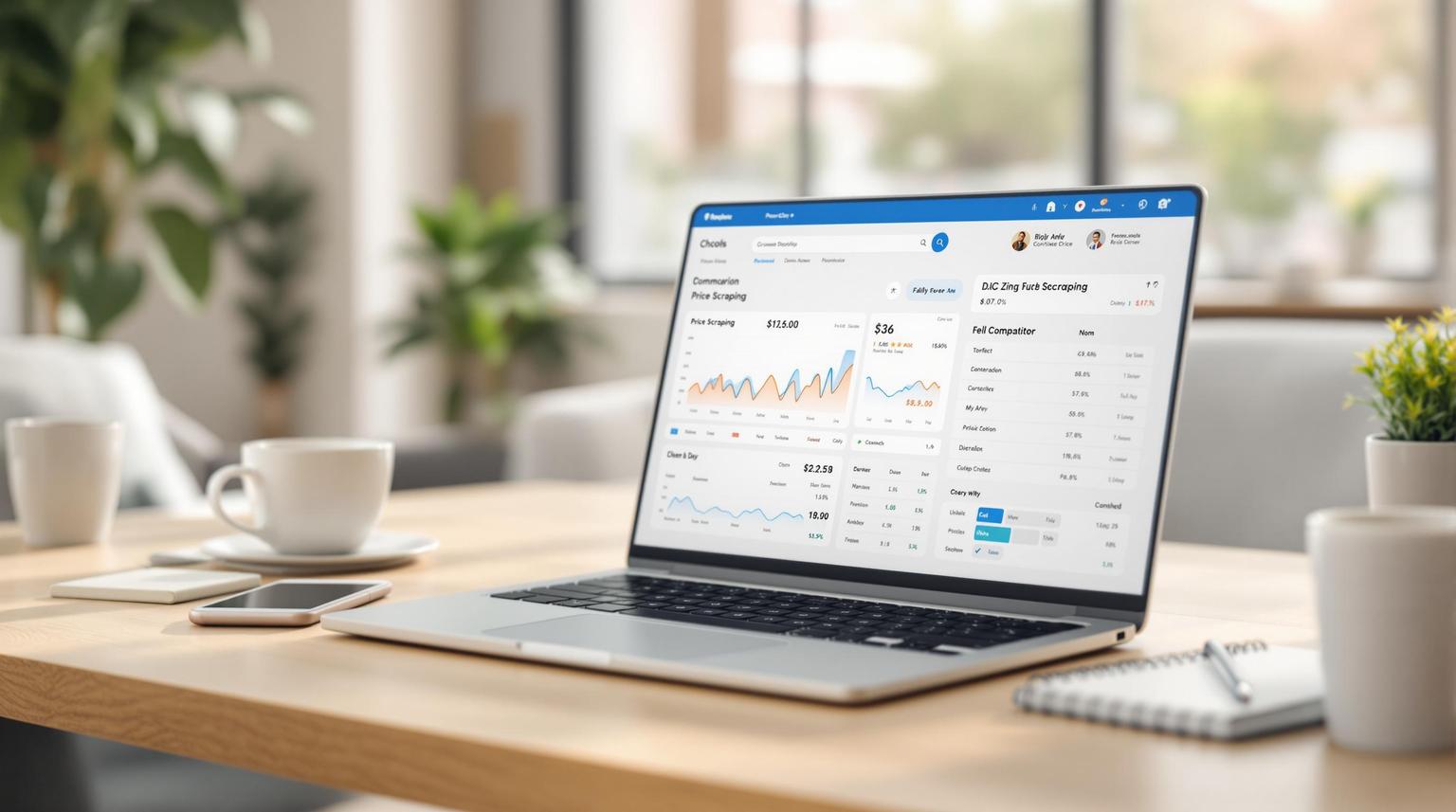How to Monitor Prices for Dynamic Pricing Success

March 24, 2025
Want to boost your e-commerce revenue with smarter pricing? Dynamic pricing, powered by real-time price monitoring, is the key. Here's what you need to know:
- Dynamic Pricing: Adjust prices in real time based on market demand, competitor data, and trends.
- Price Monitoring: Collect and analyze pricing data from competitors and marketplaces to stay competitive.
- Key Benefits:
- Track competitor prices instantly.
- Make data-driven pricing decisions.
- Improve profits and market positioning.
How to Get Started:
- Use tools like ShoppingScraper for accurate, real-time data.
- Monitor key metrics like price changes, profit margins, and demand patterns.
- Apply dynamic pricing strategies (time-based, demand-driven, competitor-based, or AI-powered).
- Avoid common mistakes like price wars and technical issues.
- Regularly test and refine your pricing strategies.
Dynamic pricing isn’t just about staying competitive - it’s about making smarter decisions that drive sales and profits. Let’s dive into how you can implement these strategies effectively.
Dynamic Pricing Basics in E-commerce
Dynamic Pricing Definition
Dynamic pricing involves adjusting prices in real time based on factors like market trends, demand levels, and competitor activity. This approach helps businesses improve revenue and stay competitive. Pytrik Zwaagstra, Head of Sales at Garmin Netherlands, highlights the role of tools in this process:
"ShoppingScraper offers a clear overview of all sellers in the market and delivers data from multiple marketplaces."
To make the most of dynamic pricing, combining it with reliable price monitoring is key for gaining actionable insights.
Price Monitoring Fundamentals
Price monitoring is the backbone of dynamic pricing. It involves collecting and analyzing pricing data from various sources to make informed decisions. This process typically includes:
- Tracking market prices
- Monitoring competitor pricing
- Analyzing historical pricing trends
- Identifying demand patterns
Arjan Pelle, Manager Business Intelligence at Nedis, explains its value:
"ShoppingScraper has become an integral part of our distribution strategy. The product and pricing data it provides allows us to make smart decisions about our inventory and pricing."
Quick access to market data enables businesses to respond effectively. Koen van den Eeden, Managing Director at OMG Transact, emphasizes this point:
"ShoppingScraper supports us in making better decisions for our clients. The data accuracy in combination with the fast way to extract it to our own platforms makes ShoppingScraper a valuable partner."
When setting up price monitoring, businesses should focus on three critical areas:
- Data Accuracy: Ensure that pricing information is precise and trustworthy.
- Real-time Updates: Keep track of price changes as they happen.
- Market Coverage: Monitor prices across all relevant sales channels and competitors.
Setting Up Price Monitoring
Selecting Competitors to Track
To gather valuable market insights, start by identifying competitors and products that align closely with your target customer base. Focus on direct competitors offering similar products. Using standardized identifiers like EAN codes ensures accurate product comparisons.
"Matching products in ShoppingScraper is really easy. We just had to import our list of products with EAN codes and the system automatically scraped the right product information."
– Jos Roodhuizen, Commercial Director at Badkamerwinkel.nl
Expand your market view by monitoring prices on major platforms such as Google Shopping, which operates in over 40 countries, and other relevant marketplaces. Once you've identified competitors, make sure your monitoring tool meets the necessary criteria.
Price Monitoring Tool Requirements
A reliable price monitoring tool is critical for implementing dynamic pricing strategies. Look for tools with the following features:
| Feature Category | Key Requirements |
|---|---|
| Data Accuracy | Advanced EAN/GTIN matching with title and URL validation |
| Collection Speed | API response times under 4 seconds and 99% uptime |
| Integration Options | API support, web interface access, and export formats like JSON/CSV |
| Automation | Scheduled data collection with customizable intervals |
| Coverage | Access to multiple marketplaces and global data |
"The data comes from Google Shopping, where we collect pricing data on an EAN-level. This means we capture every variant, color, and size - updated throughout the day."
– Job van der Geest from VML Netherlands
Once you've ensured the tool meets these standards, the next step is to determine how often you need to collect data.
Data Collection Timing
Setting the right frequency for monitoring is key to staying competitive without overloading resources. The timing will depend on how dynamic your market is and your specific business needs. Most modern tools allow flexible scheduling options:
- Hourly updates: Ideal for fast-moving markets with frequent price changes.
- Daily collection: Works well for typical retail environments.
- Weekly monitoring: Best for stable markets with fewer price fluctuations.
Regularly updated data helps you stay competitive and manage resources effectively.
Making Sense of Price Data
Key Price Metrics to Track
Keeping an eye on important pricing metrics allows businesses to make smarter decisions. Here are some key measurements to focus on:
| Metric | What to Track | Why It’s Important |
|---|---|---|
| Price Position | Market average, minimum, and maximum prices | Gauge where you stand in the market |
| Price Changes | Daily or weekly price adjustments | Spot trends and recurring patterns |
| Profit Margins | Margins at varying price points | Ensure you stay profitable |
| Stock Levels | Inventory status vs. price shifts | Manage supply and demand effectively |
By analyzing these metrics, you can uncover larger market trends and refine your pricing strategies.
Spotting Market Patterns
Digging into the data can reveal useful market patterns that impact pricing. Here are a few to pay attention to:
- Seasonal trends: How do prices shift during specific times of the year?
- Competitor pricing: When and why do competitors adjust their prices?
- Market elasticity: How does demand react to price changes?
Turning these insights into visual tools can help you make more accurate pricing decisions.
Using Charts and Dashboards
Visual tools like charts and dashboards make complex data easier to understand. Here’s how they can help:
Price Trend Analysis
- Track historical price movements over time.
- Compare your pricing to competitors.
- Visualize your market share.
Performance Dashboards
- Get real-time alerts on pricing changes.
- Assess how price adjustments impact profit margins.
- Analyze how sales volumes align with pricing.
sbb-itb-65e392b
Running Dynamic Pricing Systems
Dynamic Pricing Methods
Dynamic pricing uses automated adjustments to adapt to market changes in real-time. It relies on a mix of current data and automation to optimize prices. Here are some common methods:
| Method | Description | Best Used When |
|---|---|---|
| Time-Based | Prices shift depending on specific times or seasons | Managing perishable goods or seasonal products |
| Demand-Driven | Adjusts prices based on market demand | Competing in markets with fluctuating inventory levels |
| Competitor-Based | Changes prices in response to competitor pricing | Operating in price-sensitive markets |
| AI-Powered | Uses machine learning to predict the best prices | Handling large and complex product catalogs |
Pick the method that aligns with your business needs and follow the steps outlined below for implementation.
Implementation Guidelines
A successful dynamic pricing system starts with a strong foundation in price monitoring. Here's how to turn data into actionable pricing strategies:
"ShoppingScraper has been a key asset for our agency. With the support of ShoppingScraper, we are able to collect massive quantities of relevant data, which feeds our systems and provides our specialists with data-driven insights. These insights help them make better decisions about advertising, optimization, pricing, and inventory management, leading to increased sales and profits."
Steps to Implement Dynamic Pricing:
- Set Clear Objectives: Identify specific goals and key performance indicators (KPIs) to measure success.
- Configure Data Collection: Automate the process of gathering price data from relevant sources.
- Create Price Rules: Develop clear and automated pricing rules based on your objectives.
- Test and Validate: Conduct small-scale tests to ensure the system works as expected before rolling it out fully.
Common Mistakes to Avoid
Dynamic pricing can be highly effective, but there are some common pitfalls to watch out for:
- Price Wars: Avoid aggressive price matching that can lead to damaging price wars. Set minimum profit margins and introduce "cooling-off" periods to limit frequent price changes.
- Technical Issues: Regularly monitor system performance and ensure accurate product matching across platforms. Always have backup systems in place for manual overrides.
- Customer Trust: Keep pricing policies transparent and avoid drastic price swings. Communicate your value proposition clearly to maintain customer confidence.
"The data comes from Google Shopping, where we collect pricing data on an EAN-level. This means we capture every variant, color, and size - updated throughout the day."
Tracking Results and Improvements
Success Metrics
The effectiveness of dynamic pricing depends on monitoring key performance indicators (KPIs). Focus on these critical metrics:
| Metric Category | Key Measurements | Target Goals |
|---|---|---|
| Financial | Gross margin, revenue per product, average order value | Maintain profit thresholds |
| Market | Market share %, price position index, competitive gap | Assess market standing |
| Customer | Price elasticity, cart abandonment rate, conversion rate | Understand buyer behavior |
| Operational | Stock turnover, inventory levels, repricing frequency | Improve operational efficiency |
Use tools like ShoppingScraper to access real-time competitor pricing data. This allows quick adjustments across sales channels, helping you stay competitive.
Price Testing Methods
Testing different pricing strategies is essential for refining your approach. Here are three methods to consider:
-
A/B Price Testing
Experiment with different price points across customer segments. Analyze how these variations impact sales and revenue. To avoid confusion, keep test durations short - around 2–3 days. -
Price Elasticity Analysis
Study how demand shifts with price changes by comparing sales volumes before and after adjustments. This method helps identify the best price ranges for specific products. -
Competitive Response Testing
Track competitors' reactions to your price changes and measure the effect on your market position. Using automated tools can help you respond quickly and fine-tune your strategy.
These methods provide actionable data to refine your pricing decisions effectively.
Regular Updates
Incorporate testing insights into your pricing updates. Follow a consistent schedule:
- Daily: Monitor critical metrics
- Weekly: Review test outcomes
- Monthly: Analyze overall strategy performance
- Quarterly: Adjust pricing algorithms
This structured approach ensures your pricing stays relevant and aligned with market trends.
Conclusion
Staying ahead in the competitive e-commerce landscape requires smart price monitoring and dynamic pricing strategies. Using real-time data, businesses can make pricing decisions that boost revenue while staying competitive in the market.
Experts agree that investing in advanced tools for data collection and analysis improves pricing decisions, inventory management, and overall business strategies. Their experiences highlight how real-time insights can lead to measurable business growth.
To succeed with dynamic pricing, prioritize these actions:
- Keep track of prices across various marketplaces in real-time.
- Study competitor behavior and trends.
- Experiment with different pricing strategies methodically.
- Regularly monitor key performance metrics.
- Adjust pricing algorithms based on actionable data.
Related posts











